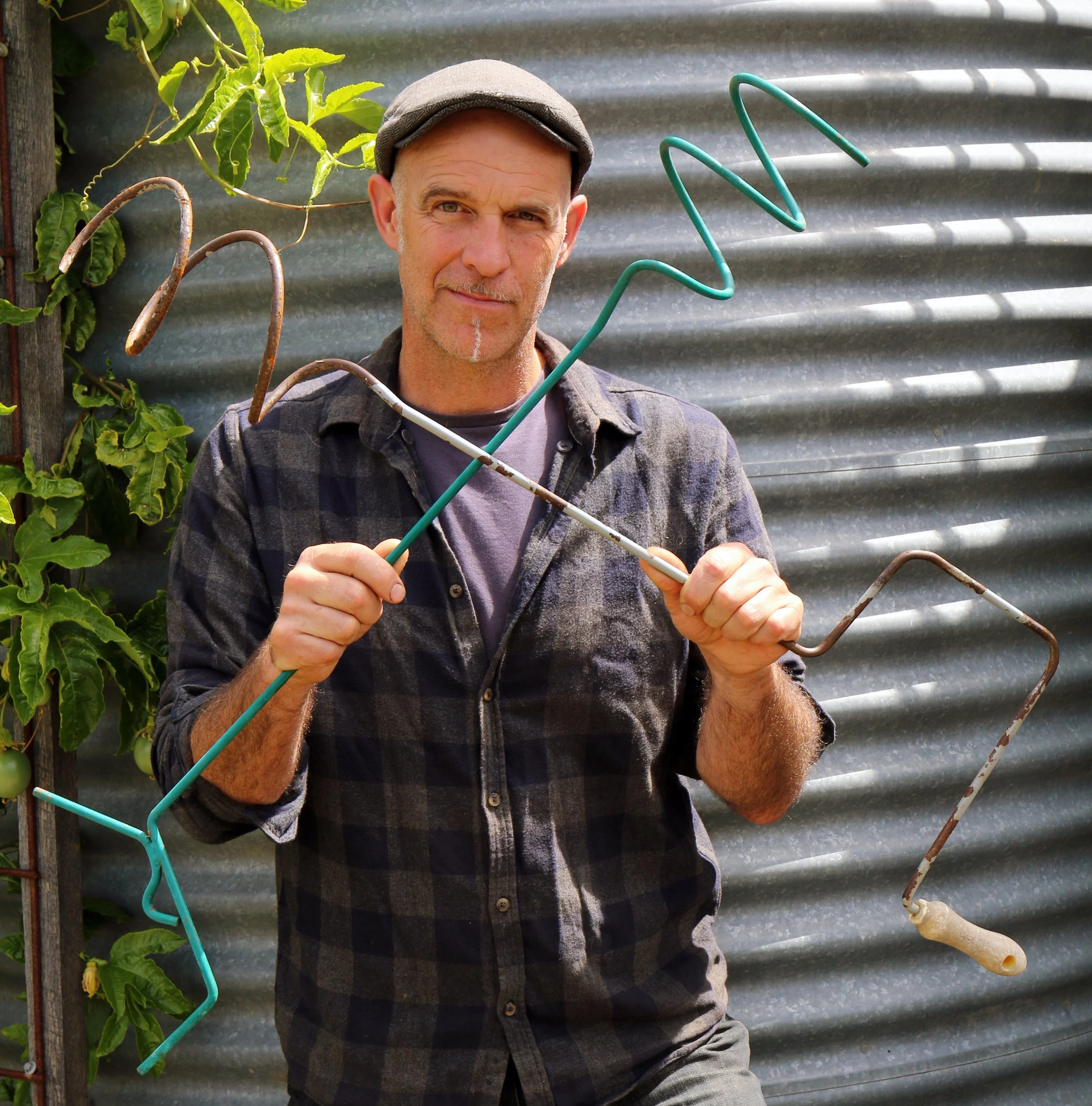The compost screw. What a corker?
Many of our gardening tools have a history going back centuries, if not millennia. The compost screw (or corkscrew) is a newcomer, yet it is the only hand-tool I know of that is designed specifically for composting.
The large corkscrew-like shape, made from a forged rod of thin steel with a wide handle, is designed to be twisted into an active compost pile, then lifted up with a chunk of compost captured by the screw. This action, repeated through the pile, is intended to aerate our compost.
In an ideal world we COULD use a compost screw to fully aerate a pile without turning it out of its bin or bay, and leaving all the compost contents in place, and I have used the tool to do this, but as we know, reality often has a way of not working quite like the ideal.
Many people find the compost screw just too heavy to lift up once it has been screwed down into their composts.
Long grass, weed stems and long woody materials, in fact any un-chopped material over about 200mm (8”) make binding a real issue when trying to use a compost screw.
Careful chopping as we layer up our compost will reduce this problem and is good practice anyway for consistent density in our compost mix. Good chopping will also make our compost piles easier to turn too.
Even with good chopping and a perfect recipe, some people will find a compost corkscrew full of moist compost is way too heavy to lift up. And, if you are strong enough to pull up a full screw load, you might find the light-weight steel of the tool is not up for the task and bends out of shape.
The other problem is the ergonomics of the handles, with both styles readily available having handles that make doing the screwing in, and particularly the lifting up very awkward. So, there is definitely a place for a better designed, better made compost screw (hint, hint local makers…)
Despite these complaints, at YIMBY* we find the compost screw an indispensable tool, but usually not for aerating our piles. We use compost screws for taking ‘core samples’ from our composts.
The top layer of our compost piles can be very deceptive, often hiding what is really going on down below in the actively composting zone. ‘Core samples’ taken from 100 – 600mm (4” – 2’) below the surface will tell us so much more about how our compost is really going. Is it too dry or too wet? Is it stinky with food scraps, or a bit lifeless with dry weeds? Is it too heavy and airless, or full of air pockets and gaps?
Give it a try, pull up a ‘core sample’ and give your compost pile a health check.
Next week we’ll look at some of our other favourite composting tools.
AUTHOR: JOEL MEADOWS
Joel Meadows works with Yes In My Back Yard, (YIMBY), a community-scale composting initiative in Castlemaine and surrounds. Send questions or comments to hello@yimbycompost.com

